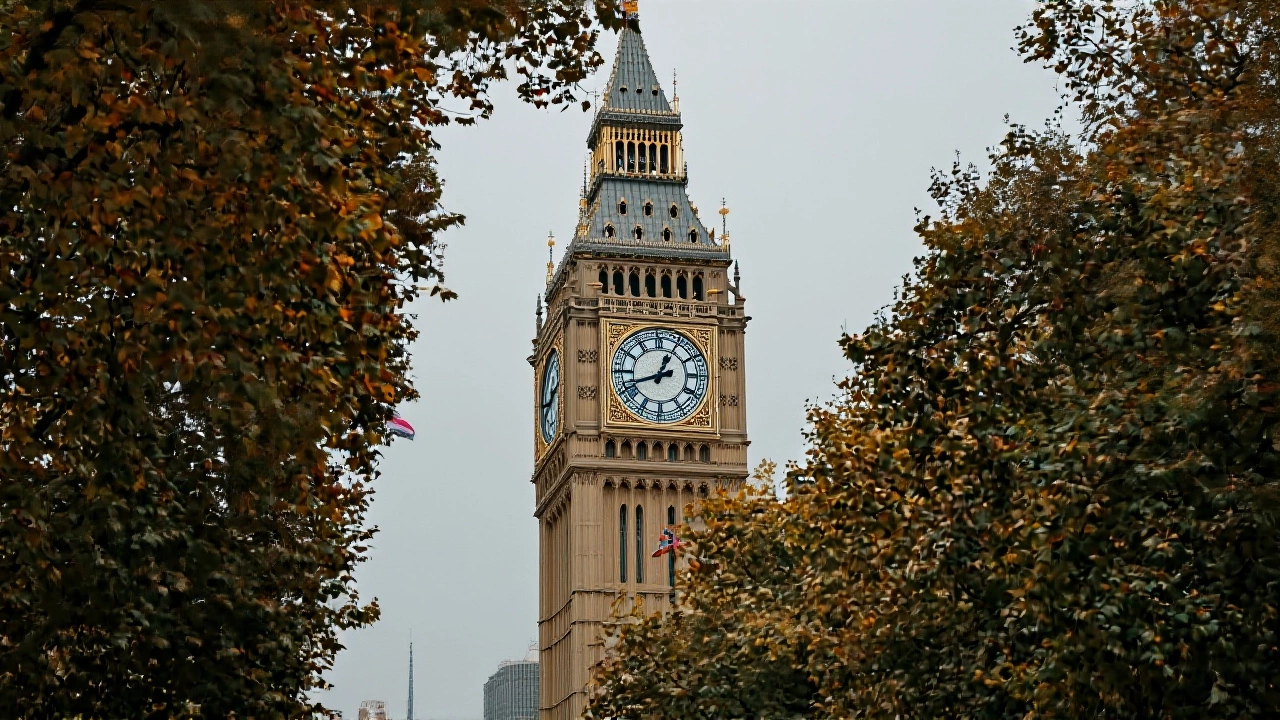When Coutts & Company published its latest property insight in June 2025, few expected the numbers to tell such a clear story: prime central London rental yields hit 3.4% — up from 2.9% just five years earlier. That 0.5 percentage point jump isn’t just a statistic. It’s a signal. And with the Autumn Budget 2025 just months away, investors are holding their breath.
Why Yields Are Rising — And What It Means
Gross rental yields in the most exclusive corners of London — think W1, SW1, SW3 — have climbed steadily since March 2020. That was the month the pandemic froze global markets, sent buyers into hiding, and left landlords scrambling. But here’s the twist: while sales stalled, rents didn’t. They kept climbing. By June 2025, they’d surged 7.7% since an unspecified June — likely June 2024 — outpacing transaction volumes by a wide margin. The market isn’t booming because people are buying. It’s booming because they’re renting.That’s the new reality. And it’s not just about scarcity. It’s about demand. Remote work faded. Families returned to the city. But high mortgage rates kept many would-be buyers on the sidelines. So they rented. And landlords? They raised rents. The math is simple: lower turnover, higher demand, tighter supply = higher yields.
The Experts Behind the Numbers
The analysis came from two insiders at Coutts & Company: Alex Webster, Head of Lending, and Katherine O’Shea, Private Markets Specialist. Both based in London, they’ve spent years advising ultra-high-net-worth clients on real estate strategy. Webster sees the lending side — who can borrow, how much, and under what terms. O’Shea watches the investment landscape — where capital flows when traditional assets feel shaky.Together, they’re not predicting a crash. They’re warning of a pivot. “The market’s no longer about capital gains,” O’Shea told Coutts’ internal clients in a recent briefing. “It’s about income stability.” That’s why yields matter more now than ever. A property that generates 3.4% annually is far more attractive than one sitting idle, hoping for a 15% price bump that may never come.
What the Budget Could Change
The Autumn Budget 2025 — scheduled for late October, according to Treasury timelines — could be a turning point. Chancellor Rachel Reeves is weighing three major moves: ending the stamp duty holiday for second homes, tightening mortgage stress tests, and possibly introducing a new tax on foreign-owned vacant properties.Each of these could cool demand. But here’s the catch: if foreign buyers pull back, London’s luxury market doesn’t collapse — it recalibrates. Domestic investors, already seeing strong rental returns, may step in. And that’s where Coutts & Company’s Coutts Property Finders Services comes in. It’s not a sales pitch. It’s a lifeline. For clients who own multiple properties across Europe or Asia, the service helps identify which London assets still offer real income potential — not just prestige.
The Bigger Picture: A Market in Transition
This isn’t the first time London’s property market has shifted under fiscal pressure. After the 2012 buy-to-let tax changes, yields jumped from 4.1% to 5.3% within two years. Then came the 2016 stamp duty surcharge. Sales volumes dropped 22%. But rents kept rising. History doesn’t repeat — but it rhymes.What’s different now? The global context. Inflation hasn’t fully faded. Interest rates are still elevated. And the cost of living has reshaped who can afford to live where. Prime central London is no longer just for billionaires. It’s for high-earning professionals — bankers, tech execs, lawyers — who can pay £4,000 a month in rent but not £4 million to buy.
That’s why Coutts’ analysis matters. It’s not speculative. It’s observational. The data doesn’t lie: rents are outperforming sales. And unless the Budget introduces a shock — like a nationwide rent cap or a sudden mortgage freeze — that trend won’t reverse.
What Comes Next
Investors are watching two things: the timing of the Budget and the Chancellor’s tone. If Reeves frames her measures as “fairness for renters,” expect a surge in demand from institutional buyers. If she targets foreign ownership aggressively, expect a brief dip — followed by a rebound from UK-based wealth.One thing’s certain: the days of passive property ownership are over. You don’t just buy a flat in Mayfair anymore. You manage it. You understand the tax implications. You track rental cycles. And you work with experts who’ve seen this movie before.
For now, the numbers speak louder than any political promise. Yields are up. Rents are up. Sales? Not so much. The market’s not broken. It’s just changing hands.
Frequently Asked Questions
How has the prime central London property market changed since 2020?
Between March 2020 and June 2025, gross rental yields in prime central London rose from 2.9% to 3.4%, a 0.5 percentage point increase driven by falling sales volumes and rising rents. While transaction activity remained sluggish due to high mortgage rates, rental demand surged, particularly from high-income professionals who can’t afford to buy but still want to live in W1 or SW1. The market has shifted from capital appreciation to income generation.
Why are rents outperforming property sales in London?
Rents have risen 7.7% since June 2024, while sales volumes remain below pre-pandemic levels. High mortgage rates — still hovering near 5% — have priced out many first-time buyers, while remote work trends reversed, bringing professionals back to central London. With limited new supply and strong demand from tenants earning £80k+, landlords can raise rents without losing occupancy. Buyers, meanwhile, wait for policy clarity ahead of the Autumn Budget 2025.
What role does the Autumn Budget 2025 play in this market?
The Autumn Budget 2025, expected in late October, could introduce stamp duty changes for second homes, tighter mortgage stress tests, or a new tax on foreign-owned vacant properties. These could reduce speculative buying, but may also push more capital into rental assets. Coutts analysts believe the market will adapt — not collapse — with institutional investors stepping in where individual buyers retreat.
How does Coutts Property Finders Services help clients navigate this?
Coutts Property Finders Services offers bespoke, confidential property identification for high-net-worth clients seeking income-generating assets in prime central London. Unlike generic estate agents, it uses proprietary data on tenant profiles, rental trends, and tax implications to match clients with properties that align with long-term yield goals — not just prestige. The service is exclusive to Coutts’ private banking clients and doesn’t charge transaction fees.
Is this trend limited to London, or is it happening elsewhere in the UK?
No. While prime central London is the most visible example, similar yield increases are emerging in Manchester, Bristol, and Edinburgh — but not at the same scale. London’s concentration of global wealth, high salaries, and limited new supply make it unique. Elsewhere, yields are rising due to affordability pressures, but rental growth is slower and transaction volumes are higher. The 3.4% yield in W1 is exceptional; most UK regions hover between 4.5% and 6%.
What should investors do now, ahead of the Budget?
Don’t rush to sell. If you own a property in prime central London with a yield above 3%, it’s likely still a strong income asset. Instead, review your tax structure, consider refinancing if rates drop, and assess whether you’re exposed to foreign ownership rules. Many investors are using this period to consolidate holdings — selling lower-yielding assets outside London to reinvest in high-yield central zones. Patience, not panic, is the strategy.






